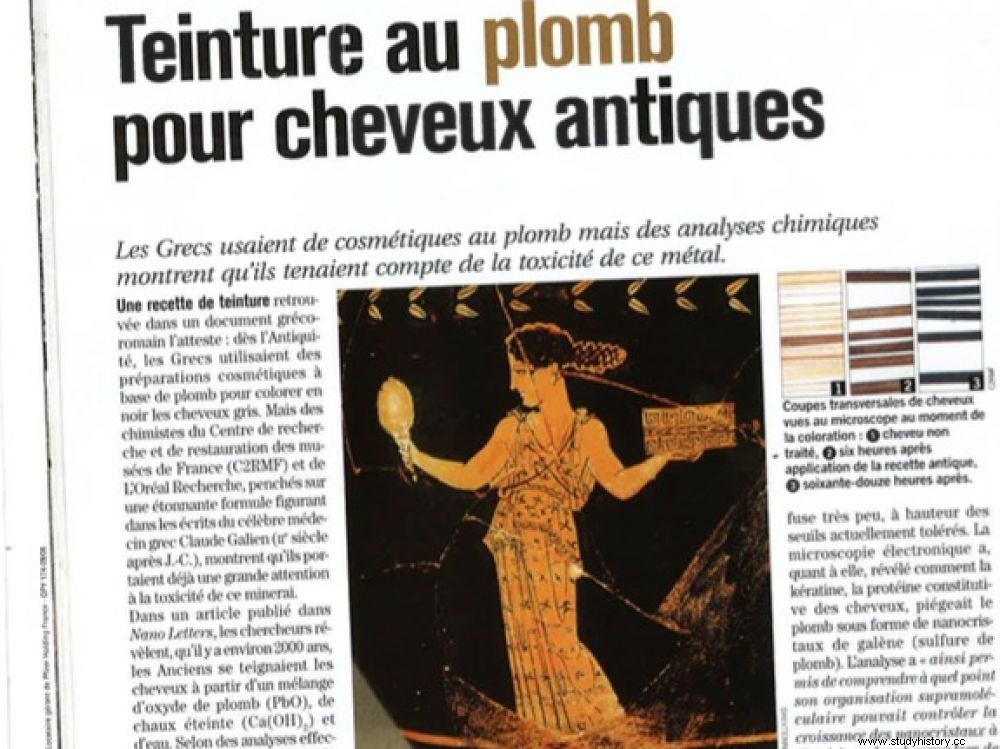In the archives of Sciences et Avenir :the Greeks used cosmetics with lead but chemical analyzes show that they took into account the toxicity of this metal.

An excerpt from Sciences et Avenir of December 2006.
ARCHIVE. A French team from the carbon-14 measurement laboratory confirms the use of synthetic chemistry by the ancient Egyptians. On the occasion of this work published on June 28, 2018 in Communications Chemistry (Nature), we invite you to read this news from Sciences et Avenir 718 of December 2006.
A dye recipe found in a Greco-Roman document attests to this:from Antiquity, the Greeks used cosmetic preparations based on lead to color gray hair black. But chemists from the Center for Research and Restoration of Museums of France (C2RMF) and L'Oréal Research, leaning on an astonishing formula appearing in the writings of the famous Greek doctor Claude Galen (2nd century AD), show that they were already paying great attention to the toxicity of this mineral. In an article published in Nano Letters , the researchers reveal that around 2000 years ago, the Ancients dyed their hair using a mixture of lead oxide (PbO), slaked lime (Ca(OH) 2 ) and water. According to analyzes carried out at the Faculty of Pharmacy of Châtenay-Malabry (Hauts-de-Seine) on artificial skin, this ancient lead diffuses very little, at the height of the currently tolerated thresholds. Electron microscopy has revealed how keratin, the protein that makes up hair, traps lead in the form of nanocrystals of galena (lead sulphide). The analysis “thus made it possible to understand to what extent its supramolecular organization could control the growth of nanocrystals inside the hair during coloring” , explains Philippe Walter, from the C2RMF.
